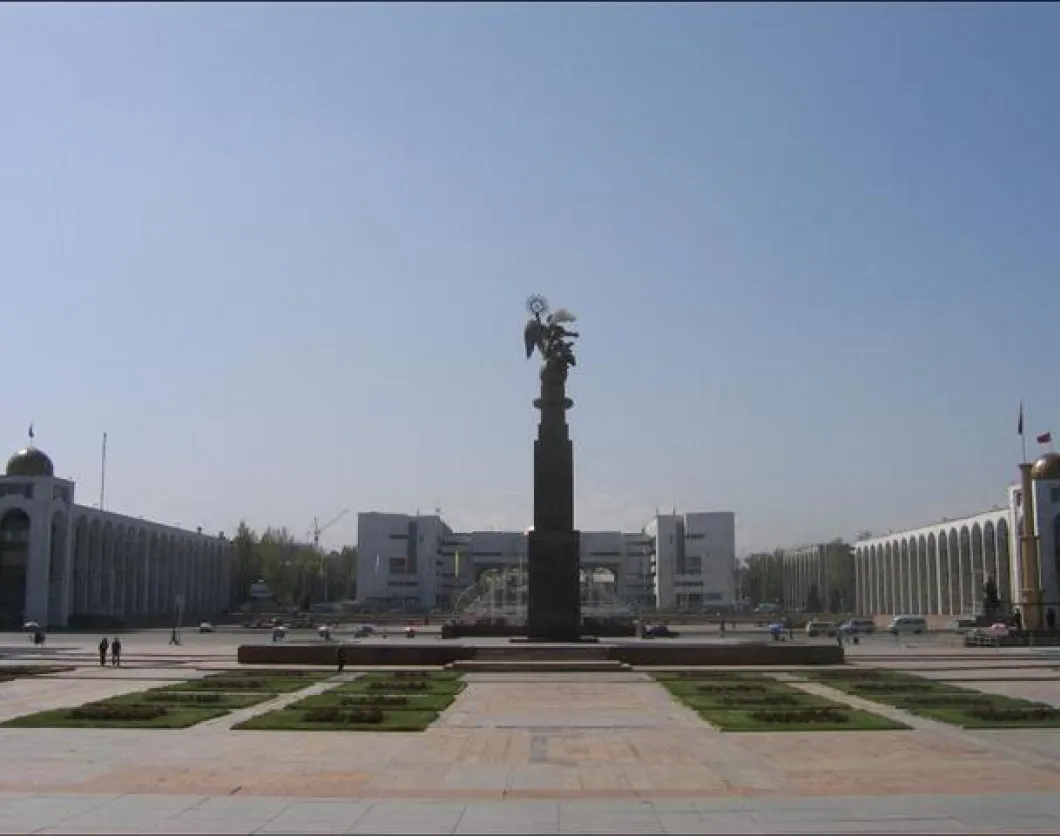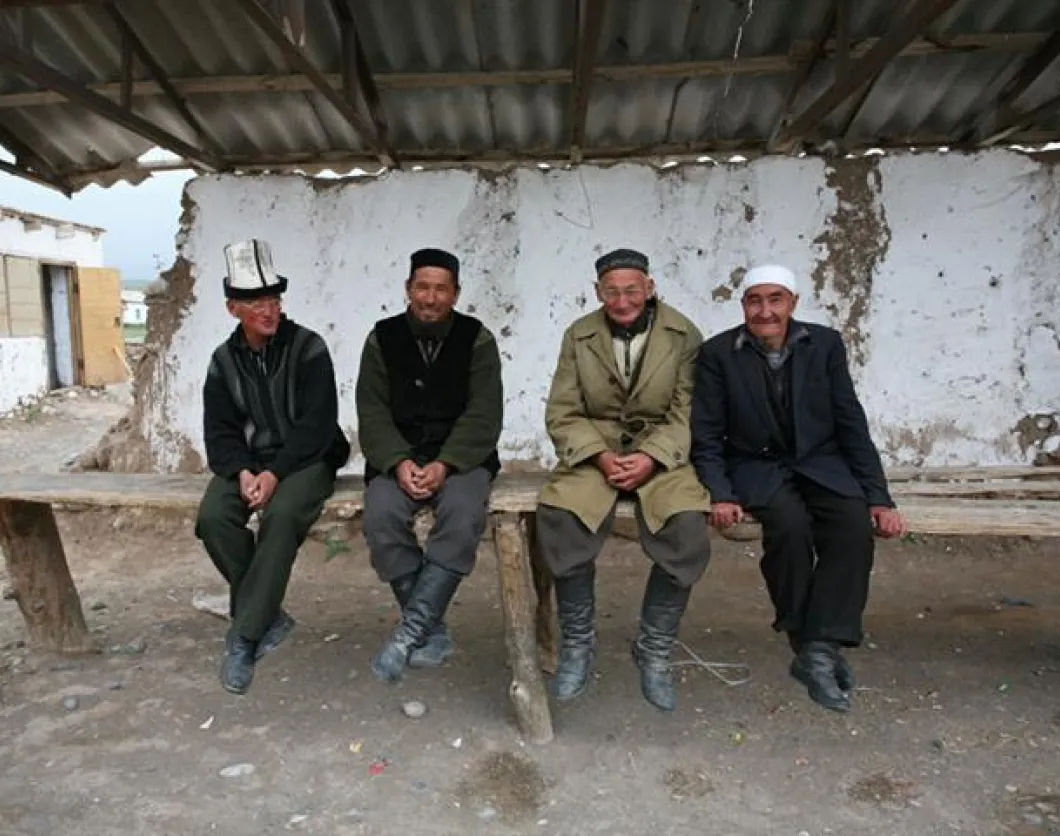Bishkek is the capital and the heart of the Kyrgyz Republic, its political, economic, scientific and cultural center, and the main transportation hub. It has population of approximately 1,000 000. Originally founded in 1878 as the Russian fortress of Pishpek, between 1926 and 1991 it was known as Frunze, after the Bolshevik military leader Mikhail Frunze. The name is thought to derive from a Kyrgyz word for a churn used to make fermented mare's milk (kumis), the Kyrgyz national drink.
Bishkek is situated at about 800m altitude just off the northern fringe of the Ala-Too range, an extension of the Tien-Shan mountain range, which rises up to 4,800 m and provides a spectacular backdrop to the city. North of the city, a fertile and gently undulating steppe extends far north into neighboring Kazakhstan. The Chui River drains most of the area. Bishkek is connected to the Turkestan-Siberia Railway by a spur.
Bishkek is a city of wide boulevards and marble-faced public buildings combined with numerous Soviet-style apartment blocks surrounding interior courtyards and, especially outside the city center, thousands of smaller, often privately built houses. It is laid out on a grid pattern, with most streets flanked on both sides by narrow irrigation channels that water the innumerable trees which provide shade in the hot summers.
History
Originally, a caravan rest stop (possibly founded by the Sogdians) on one of the branches of the Silk Road through the Tien Shan range, the location was fortified in 1825 by the Uzbek khan of Kokhand with a mud fort. In 1862, the fort was conquered and razed when Tsarist Russia annexed the area. The site became a Russian garrison and was redeveloped and named Pishpek from 1877 onward by the Russian government, which encouraged the settlement of Russian peasants by giving them fertile black soil farms to develop. In 1926, the city became the capital of the newly established Kyrgyz ASSR and was renamed Frunze after Mikhail Frunze, Lenin's close associate who was born in Bishkek and played key roles during 1905 and 1917 revolutions and during the Russian civil war of the early 1920s.
Following the breakup of the Soviet Union, Kyrgyzstan achieved independence in 1991, and the city was renamed Bishkek. Today, it is a vibrant, rapidly modernizing city, with many restaurants and cafes and lots of second-hand European and Japanese cars and minibuses crowding its streets. It is also the country's financial center, with all of the country's 21 commercial banks featuring offices in the city. During the Soviet era the city was home to a large number of industrial plants, but most have been shut down or operate today on a much reduced scale. Bishkek was also home to a major Soviet military pilot training school; one of its students, Hosni Mubarak, later became president of Egypt.
Landmarks
Bishkek is an attractive city, especially in summer when its thousands of trees provide color and shade. Though the city is relatively young, the surrounding area has sites of interests dating from prehistory, the Greco-Buddhist period, the period of Nestorian influence, the era of the Central Asian khanates, and the Soviet period.
The city is known as the Zurich of Central Asia. Like its European cousin, the city is densely saturated with historical monuments and ancient buildings. Structures date as far back as 1000 BC and through to Soviet occupation.
The White House: The main government building, the White House, is a huge seven-story marble block and the former headquarters of the Communist Party of the Kyrgyz SSR. Several statues of Vladimir Lenin can be found in the city. The largest one stands opposite the parliament building in a leafy park — having been moved there in 2003 from its original more conspicuous location on the main square of the city.
Ala-Too square: It is the main city square. It is the site of frequent political demonstrations and regular festivals. At night many vendors set up photograph and karaoke booths. It is still dangerous at night for foreigners though. There is also a military monument with an hourly changing of guards.
Victory Square: The square spans several acres and is made of the Soviet concrete. In the center there is an eternal flame that honors all those who died in defense of their motherland, regardless of their nationality.
Kyrgyz State Museum: The finest collection of ancient Central Asian archaeology can be found here. Much of the digging was done by Soviets in the early 20th century. Finds belong to ancient civilizations that date back as far as 2000 BC, including Sogdian, Bactrian, Scythian, Persian, Greek and of course Turkic artefacts.
Frunze Museum: This museum is dedicated to Mikhail Frunze. The building consists of numerous rooms that resurrect the general in life-size dioramas, set at various points throughout his life.
Osh Bazaar: This is the city's best-known food bazaar where you can buy hundreds of different products from a fresh sheep's head to locally made Korean pickled salads. While some guidebooks warn of pick-pockets, most find this a safe and rewarding visit.









